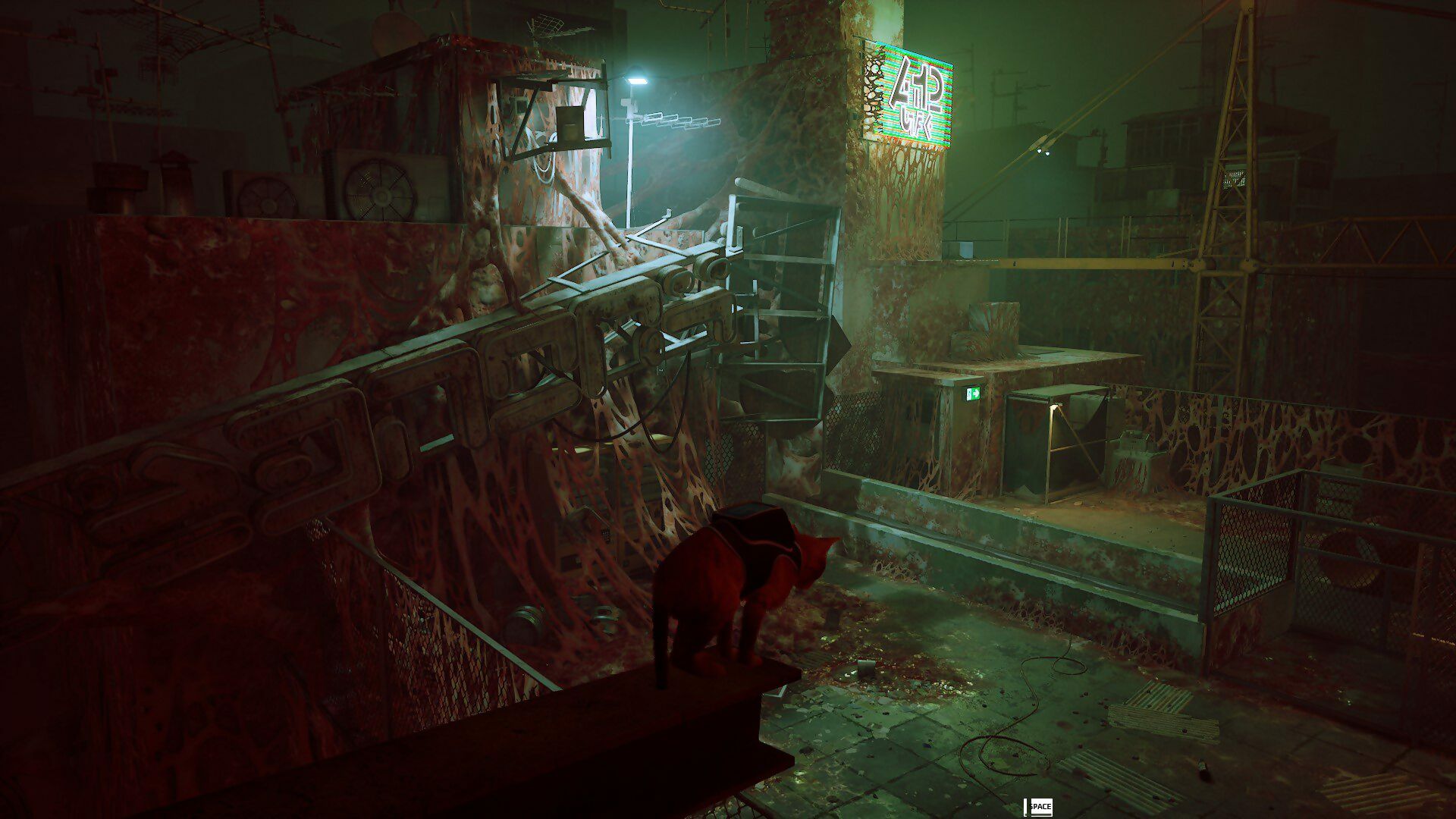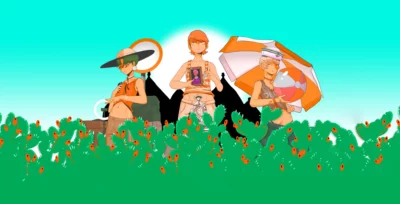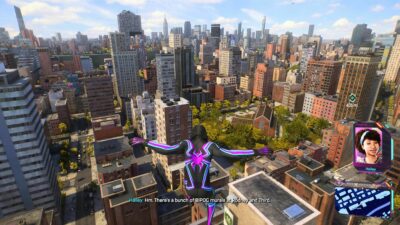
Within far more than just a whisker of greatness, Stray is the ultimate sci-fi cat simulator. Here’s our review…
It’s me. A cat. I’m following my new robot mate to an apartment. The clumsy, inefficient biped is naturally much slower than me, and so I’m gently leaning my thumb on the analogue stick to keep pace. Remember how exciting it was when The Witcher 3’s NPCs matched the player’s movement speed? That’s because this stuff is usually a real snooze, full of awkward stops and starts, or waiting for your companion to play catchup. But Stray? Well, you’re a cat. More importantly, you’re a cat animated with such love, such satisfying sleekness, and perfect padding, that just walking feels like play. It feels so, so good to just move. To circle the robot’s feet as he strides, to look up at the lights and signs and simulated stars of the walled city.

No two places in Stray look the same; each is filled with detail.
That city, it’s a very different kind of place. Yes, it’s oddly gorgeous in its derelict detail, and yes, it’s full of robots and squeaking alien insects. But it’s mostly different because you’re different. Soon after learning how to cat effectively – how high and far you can jump, which spaces you can squeeze through – you’ll start to see the world in a new way. Every ledge and pipe is a new opportunity for freedom, every precariously placed plant pot an invitation to procrastinate with mischievous acts of miniature calamity. If you’ve ever lived with a cat, you know. If not: there’s a reason we don’t keep cereal on top of the fridge.
All jumping in Stray is performed with contextual button prompts. Sceptical? I was too. Don’t be. It was absolutely the right choice. Not only is pouncing from spot to spot joyously freeing, but care has been taken to make everything that should be traversable so. If you can see it and reach it, and it’s not covered in spikes, there’s a very good chance you can jump on it. Don’t want to walk down stairs? No problem. Use the railing instead. There’s very little of the railroading that usually comes with contextual traversal.
This freeing exploration continues into puzzles and progress, too. Discovering Stray’s first town – a rusty ecopunk take on Hong Kong’s Kowloon Walled City – is intimidating as it is energising. Summon the feeling of arriving at a new RPG town, then imagine its vastness viewed through feline eyes. The inhabitants have problems that only you and drone-companion B12 can solve, but there’s no objective log or map markers. So you sniff around, explore, talk, follow directions. You parse out space at your own pace, and this is how Stray beckons you toward tempting distractions and paths less travelled, indoctrinating you into its uniquely sedate yet sprightly rhythm of play.

Your drone-buddy B12 translates conversations for you.
That’s until things get tense, anyway. There are strange, skittering things in the forbidden places of the walled city, attacking in groups, leaping and latching on to you like bloated ticks. You’ll need both feline wiles and speed to see you to safety, and while a later weapon-of-sorts betrays the cat-ness found elsewhere, Stray redeems itself by leaving these sections as one-offs. Later stealth sections are much more successful, once again providing opportunities for some top-tier cat theatrics.
Still, even the weakest of these encounters are scored by highlights in an already incredible soundtrack – one that had me pawing at every old radio I found to hear more. Elsewhere, sound design is equally absorbing. There’s no human speech in the game; dialogue is accompanied by a sort of glitchy, harmonious Simlish with its own wonderfully evocative musical quality. There’s also a fine selection of random mews, rars, and rows that you can interject with the press of a button.
The less apparent mysteries of Stray’s world are best left unspoilt, and while its five-hour (six or seven if you fully explore) story doesn’t reinvent the litter box, the quiet dignity, resolve, and hope of its inhabitants – especially B12 – imbue well-trodden themes with real emotional heft.

If you’ve been annoyed by a cat doing it, it’s probably a puzzle solution somewhere.
If you take one thing away from this review, though, please let it be this: I would hate for anyone to write off Stray as ‘Cat Simulator’. It’s not the one-note meme, trading in novelty and shallow, can-you-pet-it wholesomeness, that would have been so easy to make in lieu of substance. Yes, Stray’s cat is very much cat-as-idealised-pet rather than cat-as-animal – you won’t be dragging any baby birds from their nests.
And, yes, some of the close-ups are just that little bit too similar to Shrek’s Puss in Boots giving you the big eyes. But Stray uses this natural familiarity and affection to craft a beautiful mood piece, with all the creativity and focus of an independent short film, but with expertly characterful haptics that make it an absolute joy to traverse its detailed, gorgeous world. Providing, of course, that you don’t get squeamish about brutally shredded upholstery.
Highlight
Stray’s kinaesthetics are pitch-perfect, making the simple act of movement itself feel like play. Every leap, bound, lope, and sprint is incredibly well-tuned and animated.





